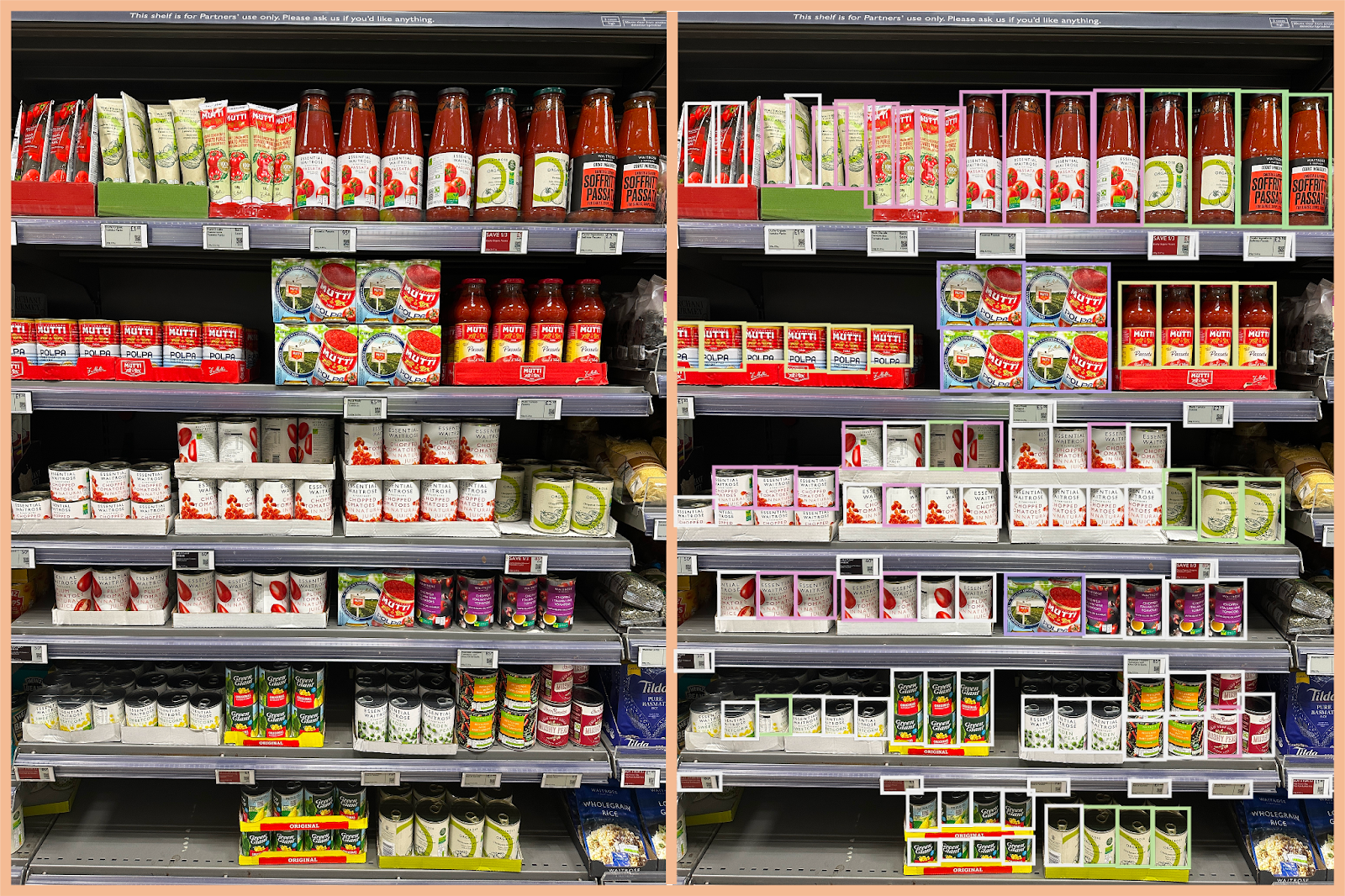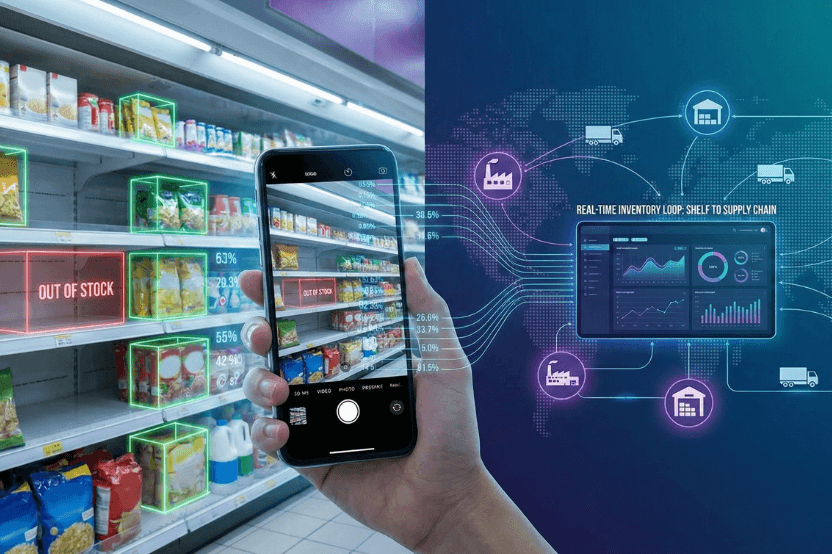For decades, CPG (Consumer Packaged Goods) companies have been sending their field reps into stores to ensure that their brands are executed as planned at the shelf, which remains one of the most critical battlegrounds for consumer attention. In fact, recent research shows that 61% of shoppers feel less loyal to brands, and 81% of Gen Z and millennial consumers have switched brands. With shoppers increasingly open to alternatives and a growing number of options competing for their attention, the ability to stand out on the shelf has never been more critical to winning the sale.
Traditionally, these reps relied on manual audits and paper checklists. With the advent of smartphones and tablets, the process evolved. Field teams snap a photo of the shelf, and their job is often considered done.
The core challenge is that the data they collect, especially shelf photos, is inherently unstructured. A raw image doesn't conform to any predefined data model. On its own, it can't be analysed, queried, or scaled across operations without additional processing.
That’s where the Neurolabs CPG Ontology comes in. Our technology transforms messy, unstructured shelf images into a rich, machine-readable data model that pinpoints every SKU, price tag, and promotion in the scene. The result? CPG companies move from guesswork to perfect retail execution with insights that are delivered in real-time. Faster, sharper, and ready for action.

In this Ontology series, we’ll be talking about how and why we built our Ontology to help solve this problem, and why we think it’s the correct path to implement image recognition at scale. However, before we dive into the ontology, let’s start with the basics. What happens at a store visit?
What Happens During a CPG Store Visit?

When a field rep from a CPG company, or a field marketing agency, visits a store, the goal is typically to check compliance, maximise shelf presence, and drive sales. To enable this process, they deploy Sales Force Automation tools. A typical process and data flow of what happens during a store visit:
1. Check-In at Store
- Some teams use GPS check-in apps or scan a QR code to log their arrival.
- They usually check in with the store manager or section lead (e.g., beverages category manager).
2. Audit and Survey Data Capture
- Capture shelf photos and count items to ensure compliance with planograms, enabling head office to verify execution against intended layouts. Scan SKUs or shelf barcodes using a mobile app or tablet to check:
- Product availability and facings
- Pricing
- Promotional materials
- Competitor activity
3. Areas of Improvement
- The field rep identifies gaps such as:
- Out-of-stocks
- Incorrect pricing
- Poor shelf positioning
- Unauthorised products or missing promotions
- They log issues immediately in the reporting system.
4. Fixes and Merchandising
- Replenish shelves from the back store if possible.
- Face up (i.e., straighten and front-face) products to ensure labels are clearly visible and improve shelf appearance.
- Adjust displays to match planograms.
- May install new POS materials or promotional displays if part of the visit objective.
5. Check-Out and Reporting
- Log actions taken, upload photos, flag unresolved issues.
- Complete a digital store visit report (often auto-synced to HQ).
- Check out of the store via their device.
Seems simple, right? Not quite.
Why Manual Retail Audits Fail in Modern CPG Execution
Let’s focus on the auditing part of the visit. When we think about how the data is collected, historically, this data collection was manual, slow, error-prone, and difficult to scale. Nowadays, field reps are equipped with mobile phones enabling real-time image capture.
The key question is: how can thousands of shelf images be converted into structured, analysable data for scrutiny at the CPG headquarters?
How Image Recognition Converts Shelf Photos into Actionable CPG Data
Firstly, using our image recognition technology, we can recognise everything that’s on the shelf, any SKU, any price, any promotion, we see it all. Secondly, we can also recognise the environment in which the SKUs are displayed. Is it a shelf? Is it a cooler? Is it a backroom? Finally, we recognise and generate this data faster and more accurately than any human ever could.
The first 2 points are especially important because we can give the data something powerful: structure.

In order for us to give the visual data structure, we developed our own CPG Ontology, a digital representation mapping key CPG concepts i.e. SKUs, prices, promos onto visual data. This enables CPGs to understand unstructured visual data and transform them into insights. Combined with structured sales data, our ontology enhances operational decisions and actions taken across the supply chain.
Coming up
Next, we’ll lift the lid on how our Ontology works and why it’s key to unlocking scalable, accurate image recognition. We’ll also answer questions like:
- What is a CPG Ontology?
- How does it work in practice?
- Why is it the best way to implement image recognition at scale?
- How does it integrate with the broader CPG ecosystem?
At Neurolabs, building an ontology wasn’t about technology for its own sake, it was about solving the real pain CPG teams face every day in the field. We know how hard it is to get the shelf right, and we believe this is the most reliable, scalable way to do it. Over the coming weeks, we’ll open the door to our thinking, our lessons, and the value this brings to every sales rep, merchandiser, and commercial leader.
Want to learn more about Image Recognition for the CPG space? Download our latest eBook!

.jpg)


